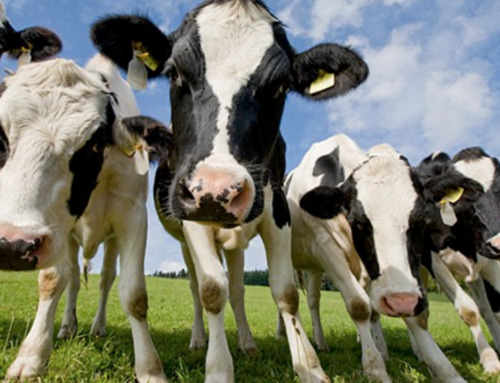Did you ever consider that we are the only species on the planet that drinks the milk of another species?
This is a food made specifically for baby cows, not for humans. Yet, it has been one of those undeniable truths we’ve been brought up to believe: Cow’s milk does a body good. No explanation and no argument.
The milk of each species is a product of evolution which, over millennia, has formulated a unique composition for that particular animal. And still, we were taught to drink cow’s milk regularly by our parents, grandparents, doctors, teachers, and athletic coaches so we could have strong bones. It turns out that they were lovingly passing on to us what they were taught, and they had our best interests in mind. The propaganda from the dairy industry was very effective, and a regular milk mania ensued and continues to endure today.
Not only do most families give cow’s milk to infants once they wean from their mother’s milk, but it’s also a major component of most baby formulas. Furthermore, many children drink it well beyond infancy and often into adulthood. This is particularly strange given babies of all other mammals are eventually weaned off their mother’s milk well before adolescence.
When we take a closer look at cow’s milk, it turns out it’s not nearly as nourishing as we were led to believe. Even more troubling, it might actually be a detriment to our bodies if consumed regularly.
For example, it is not even recommended that babies drink whole milk until they are at least 1 year old because their stomachs cannot handle the high amounts of protein, sodium, and potassium in cow’s milk. In addition, it doesn’t provide enough vitamin E, iron and essential fatty acids that our babies need. That is why it needs to be “formulated.”
In addition, many infants and children are outright allergic to cow’s milk and need to switch to soy milk or some other alternative. Common signs and symptoms of milk allergies include wheezing, trouble to breathe, coughing, hoarseness, throat tightness, stomach upset, vomiting, and diarrhea among others. According to the National Institutes of Health, approximately 65 percent of the human population has a reduced ability to digest lactose after infancy (i.e., lactose intolerant). Yet, it still gets consumed all the time as many are taught to believe we need it daily, primarily for the calcium.
Calcium – Milk’s Claim to Fame
Milk does contain a lot of calcium; about four times as much as mother’s milk. This is because cows grow much faster (even without growth hormones) than humans. The average calf’s birth weight is around 65 pounds and it will grow to be over 1,000 pounds after 18 months.
But we get a lot more than calcium when we drink it.
Cow’s milk is loaded with cholesterol and saturated fats. It contains casomorphin, an opioid peptide derived from the milk protein casein that breaks apart into an opiate-like structure which attaches to the same receptors in the brain that heroin does. Nature put that in their so that calves would crave their mother’s milk. Casein comprises roughly 80% of the protein in cow’s milk (whey is the other 20%) and is used in paints, wood glues, and certain plastics. Human breast milk has 2.7 grams of casein per liter, compared to 26 grams per liter for cow’s milk. That’s practically 10 times more. We also get some of the growth hormones that are fed to over 90% of factory farmed cows along with traces of pesticides and herbicides that are in the grains they eat (they are meant to eat grass!). These added toxins are a high price to pay to get milk’s calcium, especially when there are alternative ways for us to get calcium safely.
The Ultimate Irony
Now, let’s look even closer at the old’ “Drink milk for strong bones” mantra that seems to be standard for the American diet. Is it true? The research results have consistently come back with a resounding “NO.” But that’s not the irony. The true irony is that more and more studies are showing that hip fractures are more prevalent in people who drink the most milk. Osteoporosis, a bone-thinning condition associated with weak and brittle bones was found to occur more in those with high dairy consumption.
Per this Physicians Committee for Responsible Medicine (PCRM) article referring to a study involving over 60,000 women who were followed for 20 years, “those who consumed three or more glasses of milk per day had a 60 percent increased risk for developing a hip fracture and a 16 percent increased risk for developing any bone fracture. Another PCRM article cited a 2007 study of 29,000 men that showed a 63% increase in prostate cancer risk in those men that consumed the most dietary calcium from dairy products.
As Professor Colin Campbell has observed in his landmark book, The China Study, “the association between the intake of animal protein (includes milk) and (bone) fracture rates appears to be as strong as that between cigarette smoking and lung cancer.”
To understand what causes this correlation, it’s important to know that the pH of milk is approximately 6.6. That is slightly acidic, but more importantly, milk is acid-forming meaning that it produces an acidic residue following digestion. To offset the acidity, the body leaches calcium, an alkaline substance, from the bones. This leeching weakens the bones over time and can lead to more fractures.
Breaking the Milk Habit
So, now that we know we don’t need milk, and that it might actually be detrimental to the well-being of our bodies, what are some alternative ways we can be securing our healthy daily dose of calcium? A few suggestions:
- Plant-based food sources of calcium are much more easily absorbed by the body and don’t come with the negative inclusions we mentioned previously. Great sources include kale, bok choy, broccoli, dandelion greens, sesame seeds, almonds, figs, oranges, and romaine.
- Milk made from almonds, cashews, soy, and coconut is becoming ever more popular as milk consumption has been on a persistent decline year after year. These milk offer a healthy alternative to traditional ice creams, cheeses, milk, yogurts, butter and more. Try some BUT…..
Remember, it is always of paramount importance to read labels! When doing so, be mindful of serving sizes; quantities of sugar, sodium, and saturated/trans fats; and watch out for ingredients you can’t pronounce.






